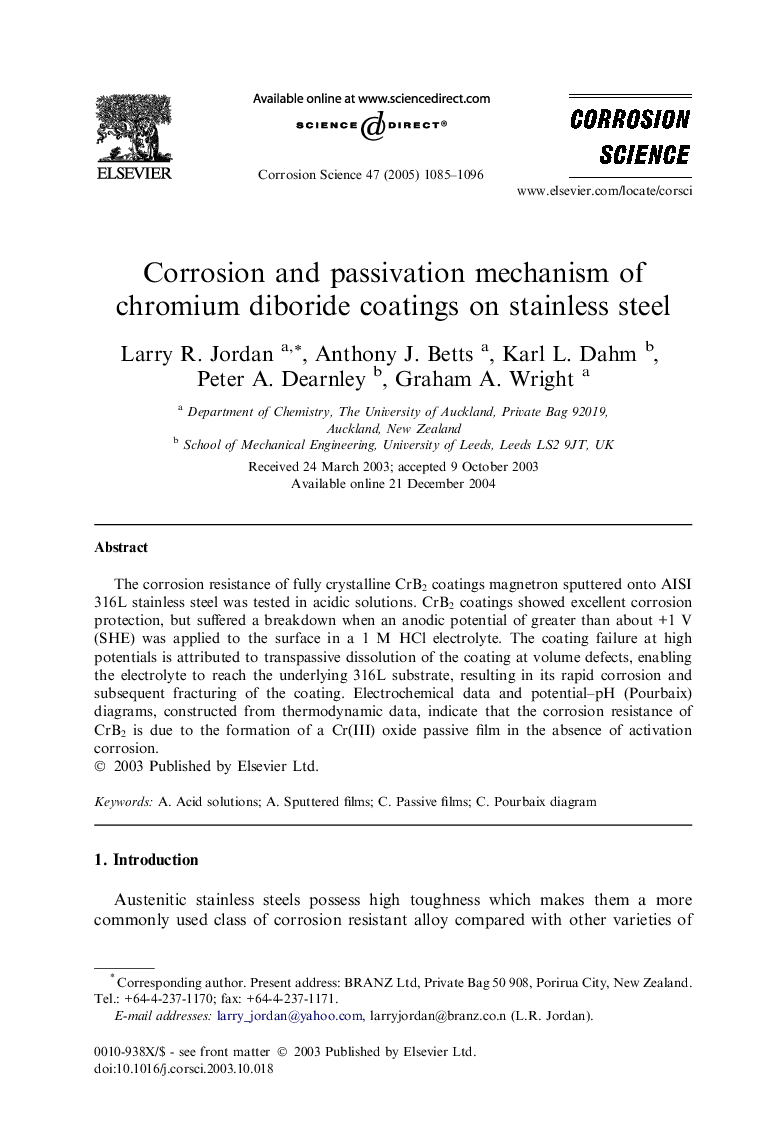| Article ID | Journal | Published Year | Pages | File Type |
|---|---|---|---|---|
| 10628748 | Corrosion Science | 2005 | 12 Pages |
Abstract
The corrosion resistance of fully crystalline CrB2 coatings magnetron sputtered onto AISI 316L stainless steel was tested in acidic solutions. CrB2 coatings showed excellent corrosion protection, but suffered a breakdown when an anodic potential of greater than about +1 V (SHE) was applied to the surface in a 1 M HCl electrolyte. The coating failure at high potentials is attributed to transpassive dissolution of the coating at volume defects, enabling the electrolyte to reach the underlying 316L substrate, resulting in its rapid corrosion and subsequent fracturing of the coating. Electrochemical data and potential-pH (Pourbaix) diagrams, constructed from thermodynamic data, indicate that the corrosion resistance of CrB2 is due to the formation of a Cr(III) oxide passive film in the absence of activation corrosion.
Related Topics
Physical Sciences and Engineering
Materials Science
Ceramics and Composites
Authors
Larry R. Jordan, Anthony J. Betts, Karl L. Dahm, Peter A. Dearnley, Graham A. Wright,
